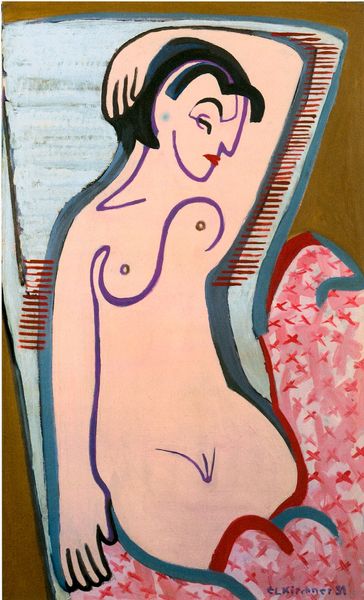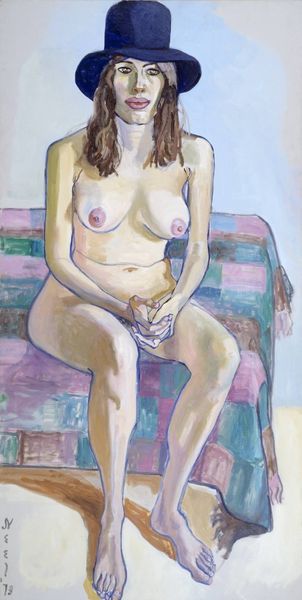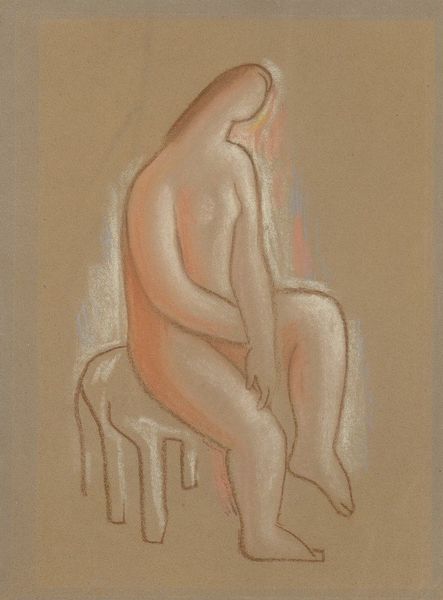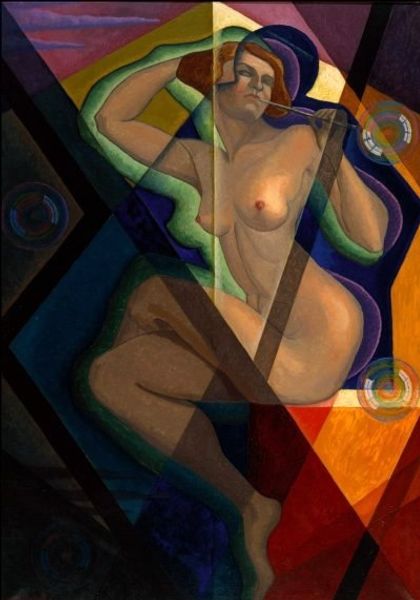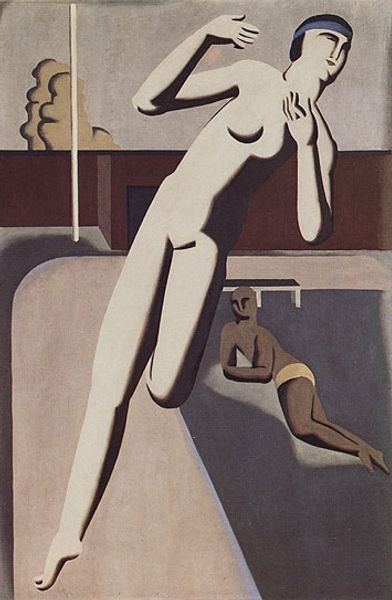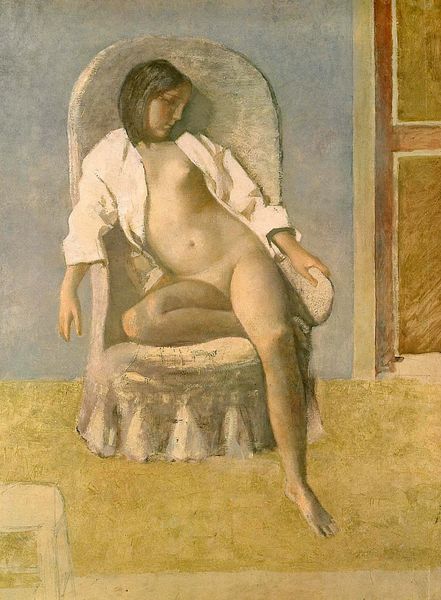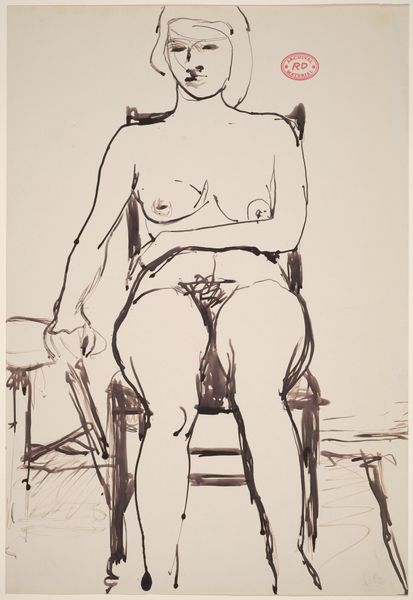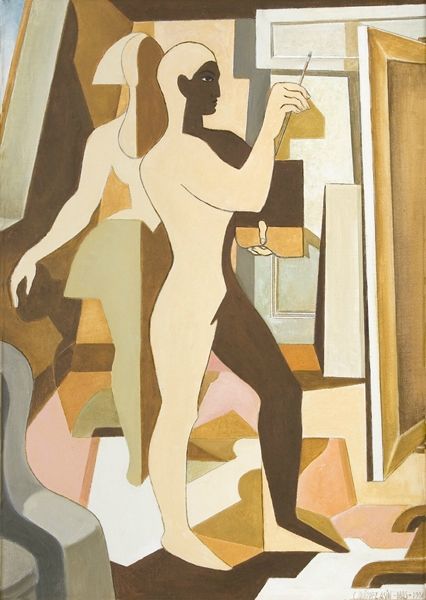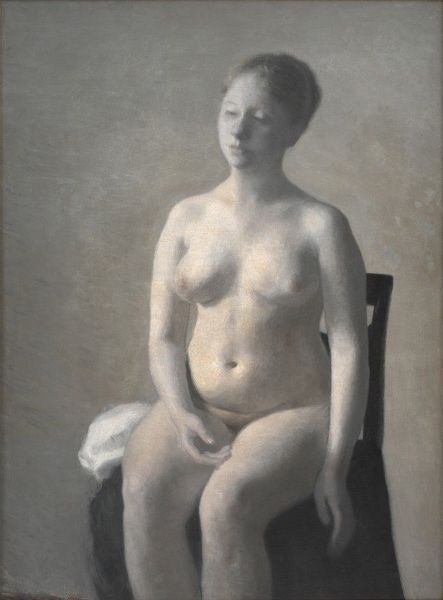
painting, oil-paint
#
portrait
#
painting
#
oil-paint
#
figuration
#
oil painting
#
painting painterly
#
nude
#
portrait art
#
modernism
#
realism
Copyright: Jean Helion,Fair Use
Editor: So, here we have Jean Helion's "Nu Accoudé" from 1949, an oil painting depicting a nude woman. The way she's seated and the overall composition, it all feels a bit melancholic to me. What's your take? Curator: Let’s consider the materiality. The oil paint itself is interesting. The pigment choices and application are fairly subdued, perhaps reflecting postwar austerity, the relative cost and availability of materials. The facture of the paint seems… careful. Given Helion’s abstract period, I wonder what prompted this return to figuration and what social pressures shaped that choice? Editor: That’s fascinating. I hadn’t thought about the economics of art-making influencing the subject matter itself. Curator: Exactly. And the way the artist has depicted the interior—a bare room, a simple chair—speaks volumes. Think about what kind of life and labour that would enable someone to sit nude for a painter in this situation. Do you get the sense of privilege, perhaps? Editor: I do see that now. The backdrop seems deliberately simple, almost a rejection of bourgeois extravagance. Was he critiquing something through this choice of staging? Curator: Possibly. Or perhaps documenting a shift in social values. It’s less about idealizing the nude form and more about representing the figure in relation to its environment, a space that itself speaks of specific labour. This links directly to Helion's background and the kind of social engagement in art that shaped the material conditions of its production. Editor: So, understanding the materials and social climate helps unlock a completely different understanding of the work. Thank you! Curator: Indeed! It shows how focusing on process reveals insights beyond just aesthetics, connecting art to its historical moment and the social relations involved in its creation.
Comments
No comments
Be the first to comment and join the conversation on the ultimate creative platform.

